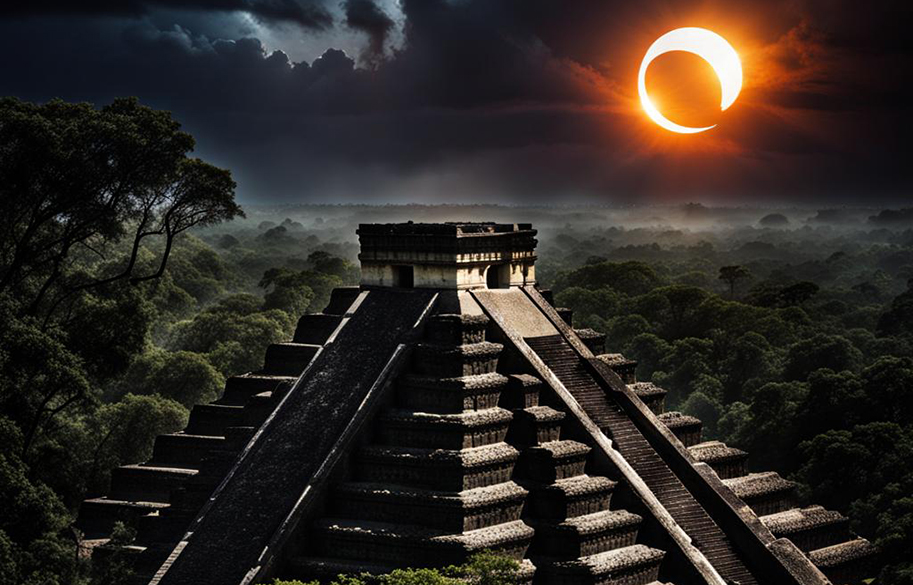Modern light pollution obscures the night sky's wonders, but in the darkness, we can rediscover the view that enthralled people for millennia.
Pre-modern societies, like the Maya, were meticulous observers, crafting calendars and religious beliefs based on the celestial rhythms.
Their keen observations even allowed them to predict eclipses, like the upcoming one gracing parts of North America on April 8th.
This eclipse follows an October 2023 "ring of fire" event, which would have undoubtedly triggered a flurry of activity among the Maya. For them, astronomy and religion were intertwined. The Sun god, Kinich Ahau, was locked in an eternal struggle with Venus, the morning star, personified by Chak Ek. Solar eclipses, seen as a "broken Sun," were viewed as moments of potential imbalance and chaos.
The Maya were brilliant astronomers
The Maya were brilliant skywatchers and accomplished mathematicians. They meticulously tracked the movements of the Sun, planets, and stars, recording their observations for their highly accurate calendar system.
Their astronomical prowess extended to aligning monumental structures like pyramids with solstices and equinoxes. They even utilized these structures, along with caves and wells, to mark the zenith days – the two times a year when the Sun is directly overhead, casting no shadows.
 |
| Eclipse panels in the Dresden Codex |
The Maya meticulously documented their astronomical observations in codices, like the Dresden Codex. This 11th-century text, along with astronomical tables, reveals their ability to predict eclipses. Researchers believe the Maya tracked the lunar nodes – the points where the Moon's orbit intersects the Earth's – and created tables marking days when eclipses were possible.
Why such dedication to the heavens?
Knowledge was power. By meticulously recording celestial events, the Maya could anticipate future occurrences and take precautions. Priests and rulers used this knowledge to guide rituals and sacrifices aimed at appeasing the gods and ensuring continued cosmic balance.
Sunsets symbolized death for the Maya, with Kinich Ahau descending into the underworld, Xibalba, each night. Eclipses, a darkening of the Sun, were seen as a potential cosmic catastrophe threatening this delicate balance.
Venus, associated with war and discord, was seen as Kinich Ahau's rival. During eclipses, planets and sometimes comets could be visible, and a brightly shining Venus near the eclipsed Sun would have been interpreted as Chak Ek's attack.
The Dresden Codex hints at this association, and the Madrid Codex, another Maya text, suggests a connection between eclipses and Venus cycles.
With the Sun seemingly "dying," the Maya believed renewal rituals were vital. Bloodletting sacrifices, seen as the highest form of offering, were performed by nobility. This "blood of kings" symbolized the life force given by the creator gods to humans, and by offering a portion of their own life essence, the Maya aimed to strengthen Kinich Ahau.
A Timeless Spectacle
The upcoming eclipse holds a special significance. It's a chance to reconnect with humanity's longstanding fascination with the cosmos, a chance to look up, reflect on the past, and share in a timeless human experience.
Whether driven by faith, scientific curiosity, or simply awe, eclipses have the power to unite us. It's a humbling and magnificent spectacle, and like the Maya, many hope for clear skies to witness this celestial dance unfold.
Discover:
















